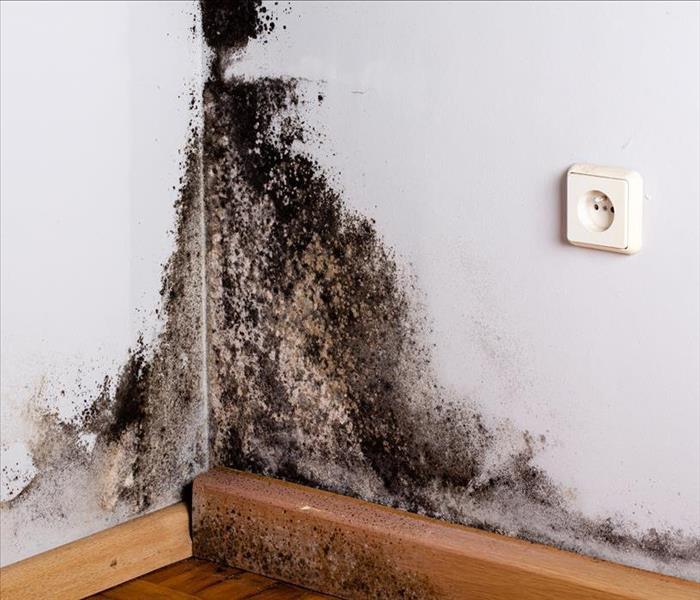Use Containment Methods To Prevent Cross-Contamination During Mold Remediation
11/11/2021 (Permalink)
 Clean mold as soon as possible to get it under control and avoid further damage in your Salt Lake City, UT commercial building.
Clean mold as soon as possible to get it under control and avoid further damage in your Salt Lake City, UT commercial building.
A safe mold cleanup job at your Salt Lake City, UT commercial building begins with installing the proper means of containment. This step is fundamental in ensuring that the mold spores from the affected area are not carried into unaffected regions of the building (i.e., cross-contamination). If you opt to tackle the job yourself, it's vital to know the proper containment measures to use for your specific issue. Your best bet is to hire reputable, certified mold remediation professionals to perform the work because they have the expertise and industrial-grade equipment to handle it appropriately and with the most safety. In addition to containment, the restoration team should use other equipment such as air scrubbers to help purify the air throughout the cleaning process.
4 Types of Containment Methods Used for Mold Remediation
Depending on what type of mold contamination you have at your office and its severity, there are various options for containment.
One or a combination of multiple types of containment may work best for your specific situation, such as:
Create a Negative Air Chamber
A negative air chamber utilizes ventilation systems to create airflow in the affected area without allowing the air to escape the room. The air and its tiny particulates are prevented from traveling through the ventilation system. Therefore, the spores are contained in the negative air chamber, narrowing the problem to a single location.
Perform a General Cleanup
Isolation isn't limited to just containing an area and its contents. Discarding unsalvageable damaged items is also a very effective mold cleanup method. Tear out water-damaged porous materials, such as drywall, carpeting, and baseboards. Then, carefully place the destroyed materials in thick trash bags and seal them securely. You should take these bags outside immediately.
Seal the Work Area With Plastic Sheeting
Thick plastic sheets can create a barrier between the contaminated area and the rest of the building. This isn't the most dependable way of preventing cross-contamination. Therefore, it's best to combine it with at least one other containment system. It's also essential to restrict traffic to the affected area to remediation workers only, if possible.
Install High-Efficiency Particulate Air Filters
Some air filters are made specifically for capturing mold spores and other tiny air particulates. These filters are very beneficial for isolating the problem by catching the spores before they have a chance to grow and reproduce. Filters, such as the HEPA variety, must be extremely fine so they can capture spores and other tiny particles from the air. It's best to look for products recommended by mold experts to ensure you get the best result while resolving your issue.
When you discover a mold contamination problem at your workplace, you need to immediately take action to get it under control. The issue will only get more severe with time, and it can get out of hand quicker than you may realize. Whether you are doing the mold cleanup job yourself or hiring experts to do it, it's helpful to know about the various containment procedures. Understanding the details of these kinds of problems before you are personally affected by them can help you if you ever experience such an issue.





 24/7 Emergency Service
24/7 Emergency Service